
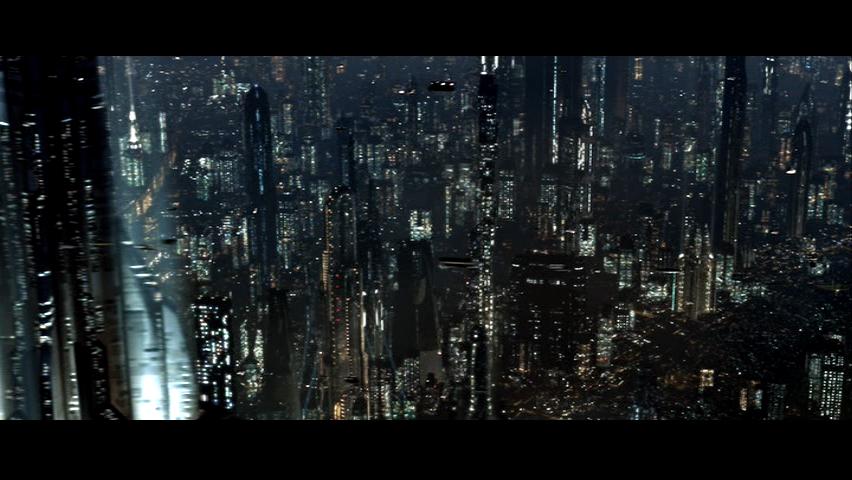
The final grouping is represented by a sole film - Star Wars. Revenge of the Sith takes its stylistic cues from 1977's A New Hope, in order to lend a sense of consistency to the films released 30 years apart. Focus will be placed on Sith, as it presents a much richer and more varied palette of styles, thanks to the help of computer generated imaging.
Star Wars Episode III: Revenge of the Sith (2005)
Revenge of the Sith is the only film that makes no mention of Earth, because there is no "Earth" and therefore nothing can be compared to it. The entire galaxy is populated by a plethora of different planets, and each one has its own unique architectural style that speaks volumes to the type of civilization that inhabits it. These styles all contrast very strongly with each other to create a dynamic stylistic image of the entire universe.
In contrast to the immense and technologically advanced style seen in the human cities, certain places and planets are portrayed as maintaining a style very much in tune with their natural setting. They are built into rock faces, located on tropical beaches, in tree houses, or perched perilously over flowing lava. Similarly, most of the films viewed this semester have shown in their vision of the future an eradication of nature and the environment. The Star Wars series takes a completely different stance, and illustrates how many people maintain a somewhat primitive or traditional way of life while still living in the modern age and possessing all the conveniences of modernity - droids, machines, and of course laser weapons. This is contrasted with the worlds that do seem devoid of nature and consumed by man-made styles and edifices.



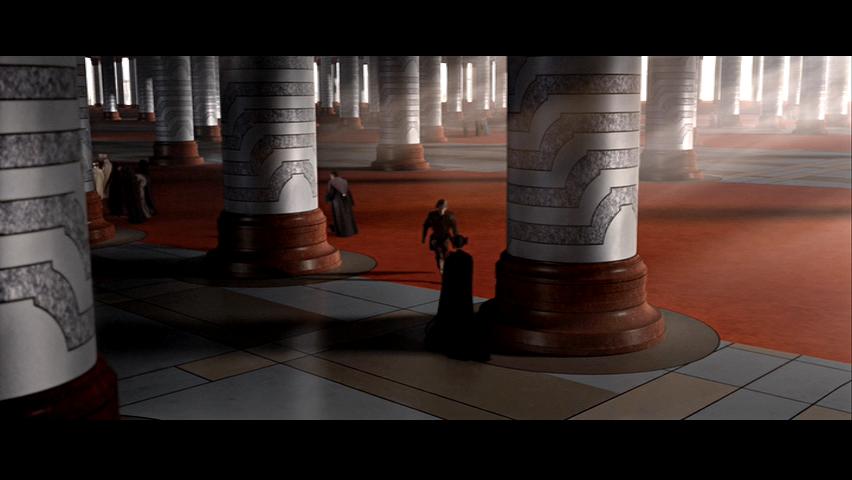
On the human-populated planets, immense cities with no appreciable scale are composed of immense infrastructures, colossal public institutions, and dizzyingly vertical towers. The style is very much reminiscent of imperial Rome, albeit at a larger scale. Large halls full of columns, arched windows, orders, and lush draperies all contribute to an image of the ancient civilization. Interesting is the way in which this classical style has been superimposed onto a system of technologically advanced superstructures to create a strange hybrid style. It lends a mood of tension and power-struggle with its vast spaces, dark corners, and long hallways. The exterior style seems very much monotonous and uniform, with very little distinction between buildings types other than small flourishes - such as Padmé's curvelinear balcony. These small details are the only representation of a soft, natural style present in the city.
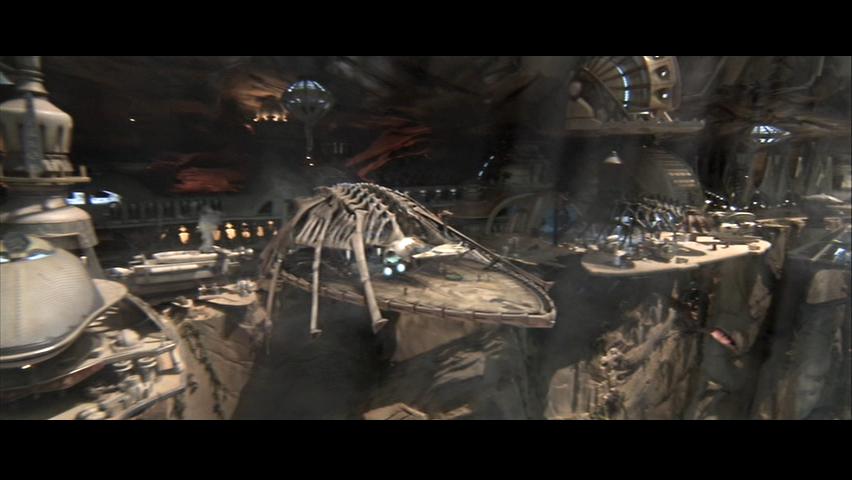
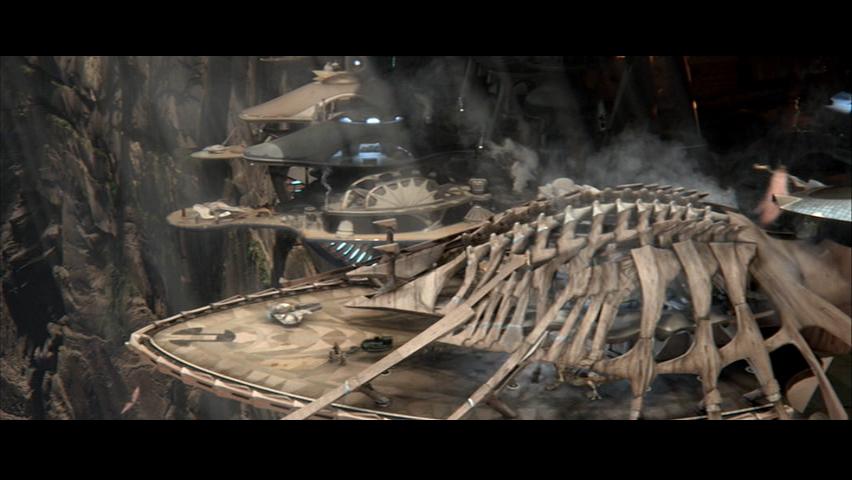
In the rock-face planet, the architecture is built into the landscape in a similar fashion envisioned in Total Recall. The style though is quite different. In Star Wars the architecture blends into the landscape, acting as one cohesive whole. There is little differentiation between interior and exterior environments as they flow from one to the other. The scale is also very different. The habitations on Mars are small and cave-like, carved into the massive valleys with interiors of metal and steel. In Star Wars, the settlement seems to take on the scale of the natural landscape with immense interior spaces and vast open plazas, with a style that mimics the raw landscape. The set is quite literally superimposed on the cliff-face to create a close relationship both visually and spatially.
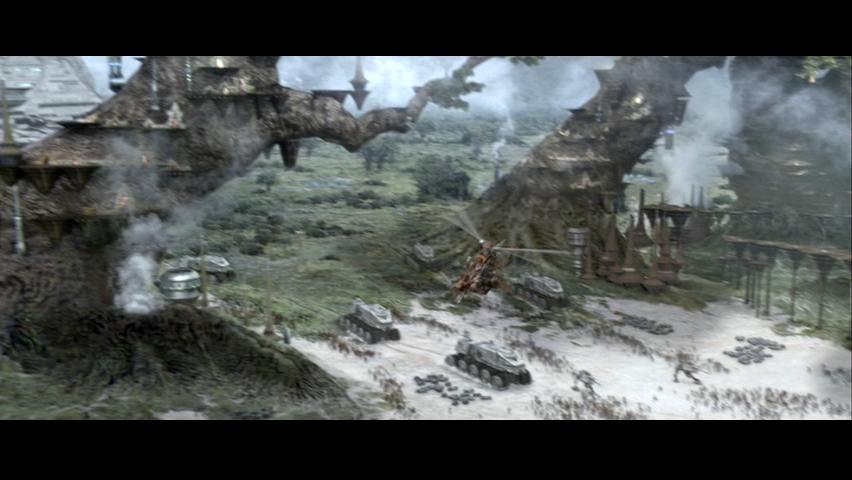

The style of the Wooki settlement is also closely linked with the natural environment. Located in massive trees along the coast, their architecture again attaches itself to its surroundings. The futuristic nature of the film is maintained in this environment through the use of technology - weapons, space travel vehicles, and hologram communications. The contrast between these high-tech elements, the natural landscape, and the wooden tree houses lend the entire set an interesting twist. The choice of natural material (wood) for the architecture suggests that the Wookis are more in tune with their surroundings, as they incorporate nature into their architectural style.